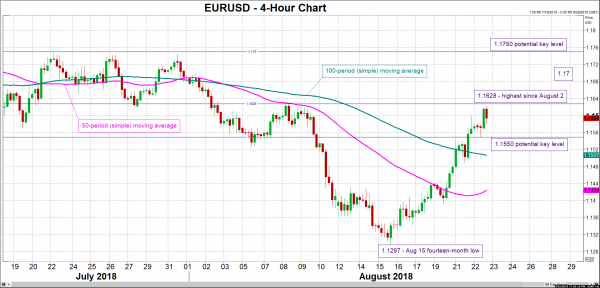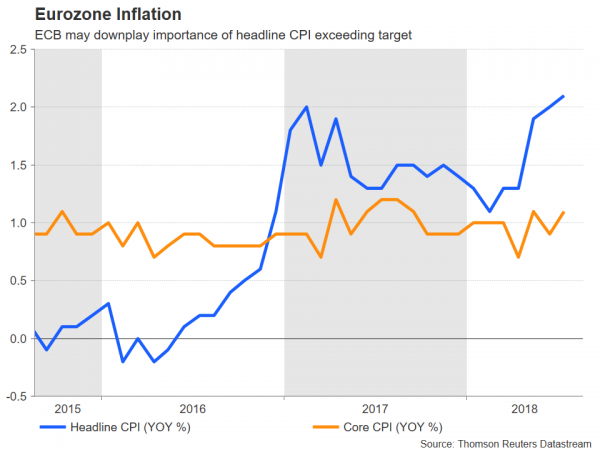The official record of the European Central Bank’s July meeting will be made public on Thursday at 1130 GMT. This comes less than twenty-four hours after the Federal Reserve releases its own minutes pertaining to its latest meeting. A stark contrast between the two, with the Fed on the hawkish side of the spectrum and the ECB on the dovish, may act as the catalyst for the euro to start giving up on recent gains which allowed it to significantly distance itself from the 14-month low of $1.1297 hit on August 15.
During its meeting in July, the ECB continued to provide the same guidance as in the policy gathering that preceded. Specifically, it reiterated that it plans to end its asset purchases by the end of 2018, while it continued to communicate steady rates “at least through the summer of 2019”, something which was interpreted as ultra-dovish by market participants when it was first expressed, leading to considerable losses for the common currency.
A theme of great interest back in July was how is the “summer-guidance” to be interpreted. Mario Draghi, the central bank’s chief, said in the ensuing press conference that it means no earlier than September, which again was viewed as dovish by the investor community and thus resulted in short positions on the euro.
However, it appears that not all ECB policymakers agree with that interpretation and tomorrow’s minutes may shed more light on the debate. If the Bank’s members overwhelmingly share Draghi’s view, then the euro may be in for a decline that may start casting doubts on whether the currency’s recovery from multi-month lows versus the greenback has much more room to run. Given a more convincing fall below 1.16, support for EURUSD may come around 1.1550 which was somewhat congested in early August. Further below, additional support could occur around the current level of the 100-period moving average at 1.1507, including the 1.15 handle. If, on the other hand, a decent number of policymakers push for an earlier hike, the pair may extend its rally. Immediate resistance to an advancing EURUSD may take place around 1.1628, the pair’s highest since August 2. A break above would turn the attention to the 1.17 handle, with more bullish movement turning the focus to the region around 1.1750, which as can be seen from the chart below resisted an upside violation a number of times in the recent past.
At the time of writing, market participants have mostly priced in a 10bps increase in the ECB’s deposit rate during the October 2019 meeting. A hawkish tilt out of tomorrow’s record may shift those expectations closer in time.
Other areas of interest out of the minutes that may also prove market-moving are commentary on trade and the trajectory of inflation. As regards the former, a deeply concerned ECB on the impact on euro area economic activity from the US’ protectionist actions and rhetoric would likely prove euro-negative. It bears mention though, that the central bank’s July decision took place just after what was seen by markets as a fruitful meeting on trade between US President Donald Trump and EU Commission President Jean-Claude Juncker. Thus, despite risks continuing to linger in the background, policymakers may appear somewhat positive on the back of those developments.
Turning to inflation, July’s headline figure of 2.1% on an annual basis exceeds the ECB’s target “of below, but close to, 2%”. The increase though is attributed to rising energy prices; the core rate that excludes volatile items such as energy grew at the much slower pace of 1.1% y/y in July. If the minutes reveal that policymakers are downplaying the significance of headline inflation moving above target, then this will again probably end up being euro-negative.
Also of importance for euro/dollar, the Fed minutes relating to its meeting ending on August 1st will be released today at 1800 GMT. Even if the two central banks’ records offer little new information, a reminder that to a significant extent they remain on opposite sides of the normalization spectrum may be enough for euro advancing since mid-August to take a pause.
It should also be kept in mind that the eurozone will be on the receiving end of flash PMI figures for August on Thursday at 0800 GMT. These too have the capacity to move EURUSD, potentially bringing into scope the aforementioned key levels.
Lastly, the ECB will be next deciding on policy on September 13, when it will also update markets with new economic forecasts.














